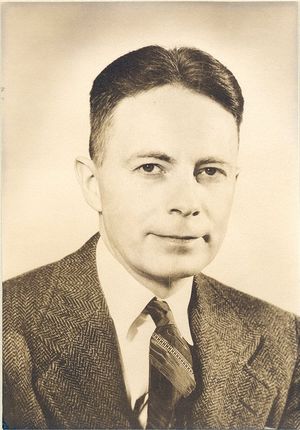Frederick Llewellyn
- Birthdate
- 1897/09/16
- Birthplace
- New Orleans, LA, USA
- Death date
- 1971/12/10
- Associated organizations
- Bell Labs, Polytechnic Institute of Brooklyn, University of Michigan
- Awards
- Morris N. Liebmann Memorial Award
1946
Frederick B. Llewellyn, IRE President, 1946, designed a sensitive receiver, which was used to detect radar signals reflected from the moon, with Edwin H. Armstrong.
Biography
Llewellyn was born in 1897 in New Orleans, LA. As an early radio enthusiast, he worked as a radio operator for the United States Navy and the Merchant Marine intermittently from 1915 to 1921. He received an engineering degree from Stevens Institute of Technology, Hoboken, NJ, in 1922 and then worked as a laboratory assistant to Frederick K. Vreeland during 1922-1923. In 1923 he was hired as a research engineer at a laboratory of the Western Electric Company and he continued at the laboratory when it became part of the Bell Telephone Laboratories in 1925. He was author or coauthor of seven IRE papers published between 1930 and 1935 dealing with topics such as noise, modulation, oscillators, and high-frequency vacuum-tube amplifiers. He received the Morris N. Liebmann Memorial Award of the IRE in 1935 in recognition or his studies of vacuum tubes at ultra-high frequencies. His book Electron Inertia Effects was published in 1941.
During World War II, Llewellyn served as a consultant to the Office of Secretary of War. He and Edwin H. Armstrong designed a sensitive receiver which was used to detect a radar signal reflected from the moon. Llewellyn served on the IRE Board of Directors from 1939 to 1945 and was IRE President in 1946. He held various consulting positions, mostly concerned with military electronics systems, in the postwar years and was assistant to the President of Bell Telephone Laboratories from 1956 to 1961. He was affiliated with the Institute of Science and Technology at the University of Michigan from 1961 to 1965 and then was Research Director of the Polytechnic Institute of Brooklyn from 1965 until his retirement in 1967. During his career he received around 39 patents. He died at the age of 74 in 1971.
